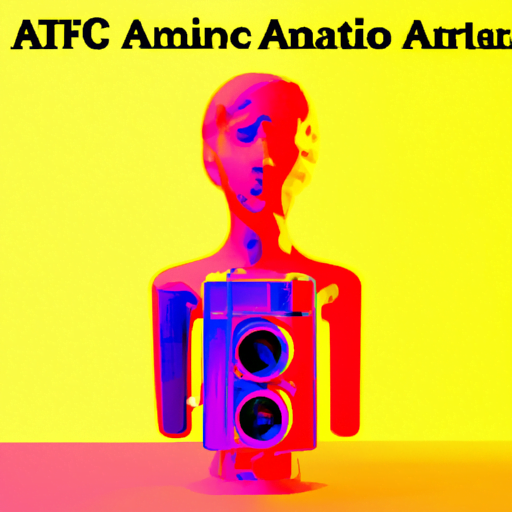-
Table of Contents
AI’s Role in Reviving Vintage Design Trends
Design trends are constantly evolving, with new styles and aesthetics emerging each year. However, there is also a growing interest in reviving vintage design trends, bringing back the charm and nostalgia of the past. While this may seem like a contradiction in the fast-paced world of design, artificial intelligence (AI) is playing a significant role in this revival. By leveraging AI technologies, designers can explore and reimagine vintage design elements, creating a harmonious blend of the old and the new. In this article, we will explore how AI is shaping the revival of vintage design trends and the impact it has on the design industry.
The Rise of Vintage Design Trends
Vintage design trends have gained popularity in recent years, as people seek to reconnect with the past and find comfort in nostalgia. From fashion to interior design, vintage elements are making a comeback in various industries. The appeal of vintage design lies in its timeless elegance, unique craftsmanship, and the stories it carries from a bygone era.
However, reviving vintage design trends is not as simple as replicating the past. Designers need to strike a delicate balance between honoring the original aesthetic and adapting it to modern sensibilities. This is where AI comes into play, offering designers powerful tools and techniques to reimagine vintage design elements in innovative ways.
AI’s Contribution to Vintage Design Revival
Artificial intelligence has revolutionized the design industry, enabling designers to push boundaries and explore new creative possibilities. When it comes to reviving vintage design trends, AI offers several key contributions:
- Pattern Recognition: AI algorithms can analyze vast amounts of vintage design data, identifying patterns and common elements. This allows designers to understand the underlying principles of vintage design and apply them in their work.
- Generative Design: AI-powered generative design tools can create new designs inspired by vintage aesthetics. By inputting vintage design samples, AI algorithms can generate new variations that retain the essence of the original style while incorporating modern elements.
- Color Palette Exploration: AI can analyze vintage color palettes and suggest modern adaptations. By understanding the color schemes used in vintage designs, designers can create harmonious color combinations that evoke a sense of nostalgia.
- Texture and Material Simulation: AI algorithms can simulate the textures and materials used in vintage designs, allowing designers to experiment with different materials virtually. This enables them to recreate the tactile experience of vintage design in a digital environment.
Case Studies: AI in Vintage Design Revival
Several notable examples demonstrate how AI is being used to revive vintage design trends:
1. Google’s DeepDream
Google’s DeepDream project, which uses deep learning algorithms, has been used to create psychedelic and surreal images. However, designers have also utilized this technology to reimagine vintage design elements. By inputting vintage design samples into the DeepDream algorithm, designers can generate unique and visually striking variations that capture the essence of vintage aesthetics.
2. IBM’s Watson for Design
IBM’s Watson for Design is an AI-powered platform that assists designers in the creative process. By analyzing vast amounts of design data, Watson can suggest design elements and patterns inspired by vintage aesthetics. Designers can then incorporate these suggestions into their work, creating designs that pay homage to the past while remaining relevant in the present.
3. Adobe Sensei
Adobe Sensei, Adobe’s AI platform, offers a range of tools and features that aid designers in reviving vintage design trends. For example, the Content-Aware Fill feature in Adobe Photoshop uses AI algorithms to intelligently fill in missing areas of an image. This can be particularly useful when restoring vintage photographs or recreating vintage design elements.
The Impact on the Design Industry
The integration of AI in reviving vintage design trends has had a profound impact on the design industry:
- Efficiency and Productivity: AI-powered tools enable designers to work more efficiently, automating repetitive tasks and providing instant suggestions. This allows designers to focus on the creative aspects of their work, accelerating the design process.
- Expanded Creative Possibilities: AI opens up new creative possibilities by combining vintage design elements with modern aesthetics. Designers can experiment with different variations and explore uncharted territories, resulting in fresh and innovative designs.
- Preservation of Design Heritage: By reviving vintage design trends, designers contribute to the preservation of design heritage. Vintage designs are not only appreciated for their aesthetic value but also serve as a source of inspiration for future generations.
- Personalization and Customization: AI algorithms can analyze individual preferences and create personalized designs that incorporate vintage elements. This allows designers to cater to the unique tastes and preferences of their clients, enhancing the overall design experience.
Summary
Artificial intelligence is playing a crucial role in reviving vintage design trends. By leveraging AI technologies, designers can explore and reimagine vintage design elements, creating a harmonious blend of the old and the new. AI’s pattern recognition, generative design, color palette exploration, and texture simulation capabilities empower designers to revive vintage aesthetics in innovative ways. Notable examples such as Google’s DeepDream, IBM’s Watson for Design, and Adobe Sensei demonstrate the practical applications of AI in vintage design revival. The integration of AI in the design industry has resulted in increased efficiency, expanded creative possibilities, preservation of design heritage, and personalized design experiences. As AI continues to advance, we can expect even more exciting developments in the revival of vintage design trends.
